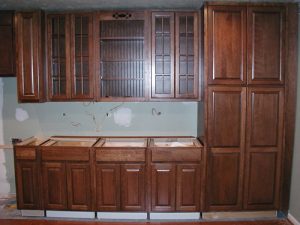Piano Moving Denver is far more than a simple relocation task. It is a delicate and precise operation that requires planning, technique, and understanding. Each instrument is not only heavy and bulky but also sensitive and complex. Its weight, structure, and musical integrity make it one of the most challenging items to transport safely.

The complexity begins with the design of the piano itself. Beneath its polished surface lies a network of strings, hammers, and soundboards that must remain in perfect alignment. Any sudden movement, vibration, or shock can disrupt this balance. A single mistake during transport could lead to tuning issues, internal damage, or even complete structural failure. This is why piano moving is often considered a specialized art.
Preparation is the first and most important stage of the process. It starts with a detailed assessment of the piano’s size, weight, and type, as each model demands a unique approach. Upright pianos, for example, require different handling compared to grand pianos, which must often be partially disassembled. The environment also plays a critical role, as movers must measure doorways, staircases, and hallways to plan a safe route.
Protective measures are essential before any lifting begins. The instrument must be wrapped in padded covers to prevent scratches and shield its surface from impacts. Securing the keyboard lid and other moving parts reduces the risk of internal shifting. Even the floor must be protected, as the immense weight of a piano can cause damage during movement. These steps create a controlled environment that minimizes risk before the piano even leaves its original spot.
The actual moving process requires both strength and precision. A piano can weigh anywhere from a few hundred to over a thousand pounds, making manual handling extremely dangerous without proper technique. Special lifting straps, dollies, and ramps are often used to distribute weight evenly and reduce strain. Coordination among movers is vital, as even a slight imbalance can lead to tipping or uncontrolled movement.
Navigating stairs or narrow spaces adds another layer of complexity. Each turn must be calculated and executed with care to avoid collisions or sudden shifts in momentum. In some cases, windows or balconies are used as alternative routes to avoid structural obstacles inside a building. These scenarios highlight why improvisation and adaptability are key skills for piano movers.
One often overlooked aspect of piano moving is climate control. Sudden exposure to humidity, cold, or heat can affect the wood and internal components. Professionals often plan moves around weather conditions or use climate-controlled vehicles to preserve the instrument’s integrity. This attention to environmental factors ensures that the piano arrives in the same condition it left.
Transportation itself is a critical phase that demands secure loading and stability. Inside the vehicle, the piano must be anchored to prevent shifting during transit. Even minor vibrations on the road can cause damage if the piano is not properly secured. Strategic placement within the transport vehicle also helps balance weight and reduces the risk of tipping.
Once the destination is reached, the process does not end with unloading. The piano must be carefully reassembled if any parts were removed, and its final position should be chosen with care. Placement near windows, heating vents, or damp walls can affect tuning and longevity. A stable environment with consistent temperature and humidity is ideal for preserving its sound quality.
After relocation, most pianos require tuning due to the physical stresses of the move. Even if no visible damage occurs, internal shifts often alter the tension of the strings. A professional tuner can restore the instrument’s pitch and ensure it plays as beautifully as before. This final step is the finishing touch that completes the relocation journey.
There are also safety considerations beyond the piano itself. Due to the sheer weight and size, improper lifting techniques can lead to serious injuries. Movers must use proper posture, equipment, and teamwork to prevent accidents. This focus on human safety is just as important as protecting the instrument.
Technology is starting to transform the piano moving industry as well. Advanced lifting devices, modular ramps, and AI-assisted planning tools are improving safety and precision. Digital mapping tools can create virtual layouts of spaces before the move, allowing teams to plan the most efficient path. These innovations reduce risk and improve outcomes in ways that were not possible before.
Environmental sustainability is another emerging concern. As with many specialized services, there is a growing push to reduce the environmental impact of piano moving. Reusable protective materials, fuel-efficient transport vehicles, and eco-friendly logistics strategies are becoming more common. These small changes contribute to a larger effort toward sustainable practices.
The emotional value of a piano often exceeds its monetary worth. Many instruments are family heirlooms, treasured investments, or tools of artistic expression. Treating them with respect during relocation is a way of honoring their history and the memories attached to them. This emotional dimension is why piano movers often view their work as a craft rather than a job.
Insurance and liability are additional considerations that protect both the owner and the movers. Because of the high value of most pianos, comprehensive insurance coverage is essential. It provides peace of mind and financial protection in the rare event of damage. Clear agreements and documentation before the move help ensure transparency and trust.
For those planning a relocation, early communication and collaboration with the moving team can make a significant difference. Sharing details about access points, building layouts, and potential challenges helps movers prepare effectively. The more information they have, the smoother and safer the process will be.
Some people attempt to move pianos without professional help, often underestimating the complexity involved. While possible for smaller instruments, it is rarely advisable for larger models. The risk of injury or damage often outweighs any potential cost savings. Professional services bring expertise, equipment, and peace of mind that are difficult to replicate.
Ultimately, piano moving is about far more than logistics. It is a meticulous process that blends technical skill, physical strength, and deep respect for craftsmanship. Each stage, from preparation to final tuning, requires attention to detail and a commitment to excellence. The result is a safe, seamless relocation that preserves both the instrument’s beauty and its voice.
The future of piano moving will likely become even more sophisticated as technology and sustainability practices continue to evolve. Yet the fundamental principles—care, precision, and respect—will remain unchanged. These timeless values ensure that every piano, regardless of its age or condition, is treated as more than just cargo. It is a piece of history, a vessel of creativity, and a source of joy worth moving with care.
In the end, what makes piano moving truly special is the balance between science and artistry. It is a task that demands not just technical knowledge but also sensitivity to the emotional weight of the instrument. Behind every successful move is a team that understands that a piano is more than wood and strings—it is a living instrument that deserves to arrive ready to create music once again.





